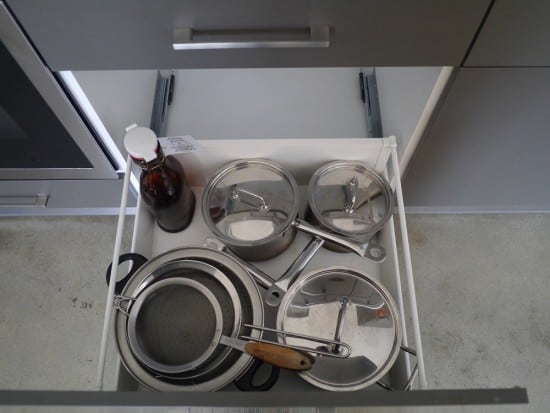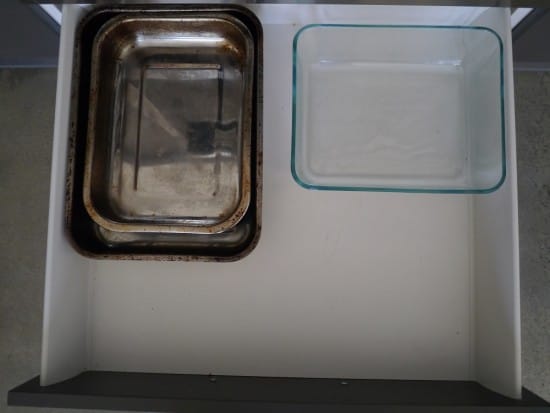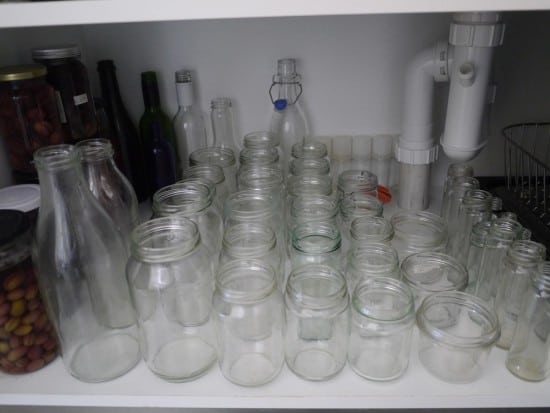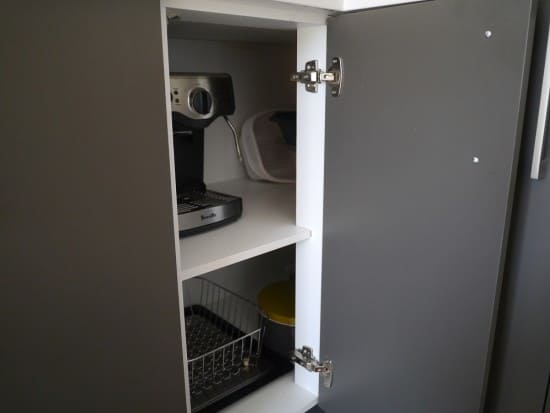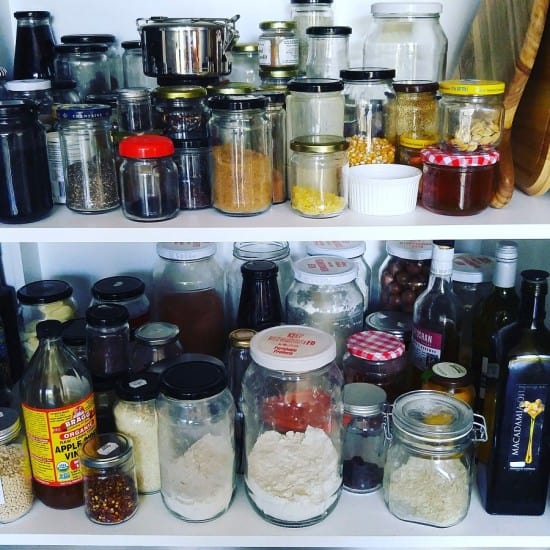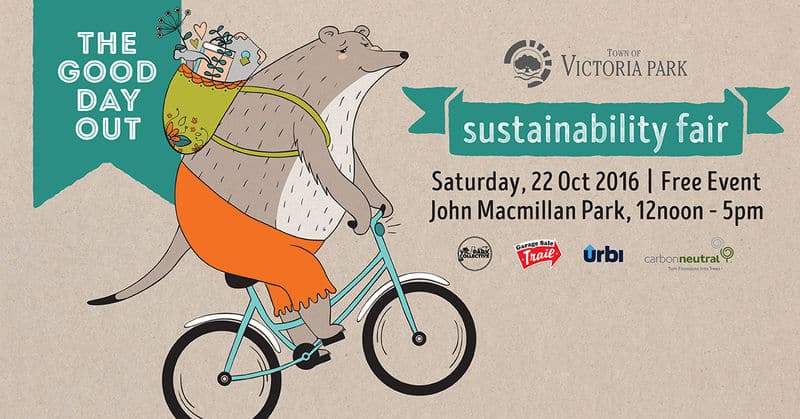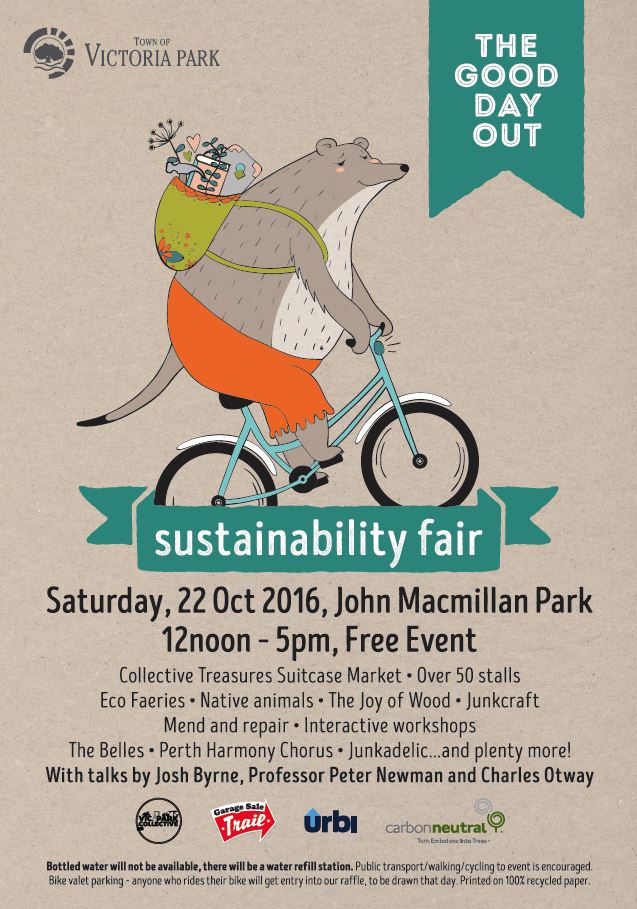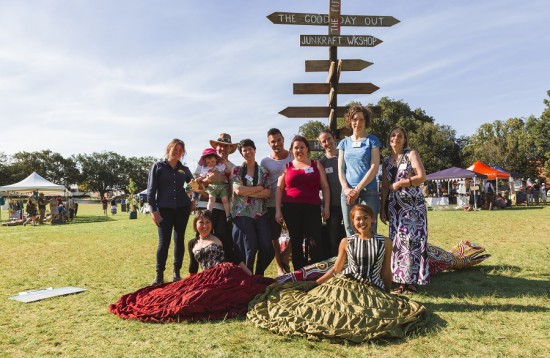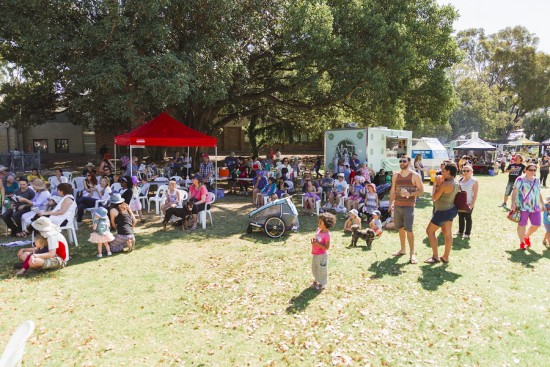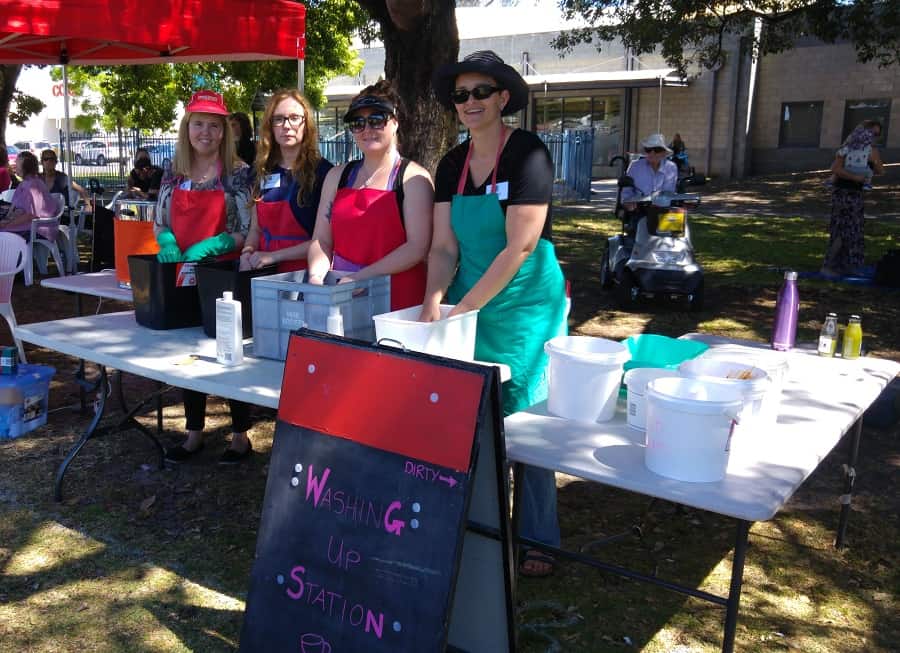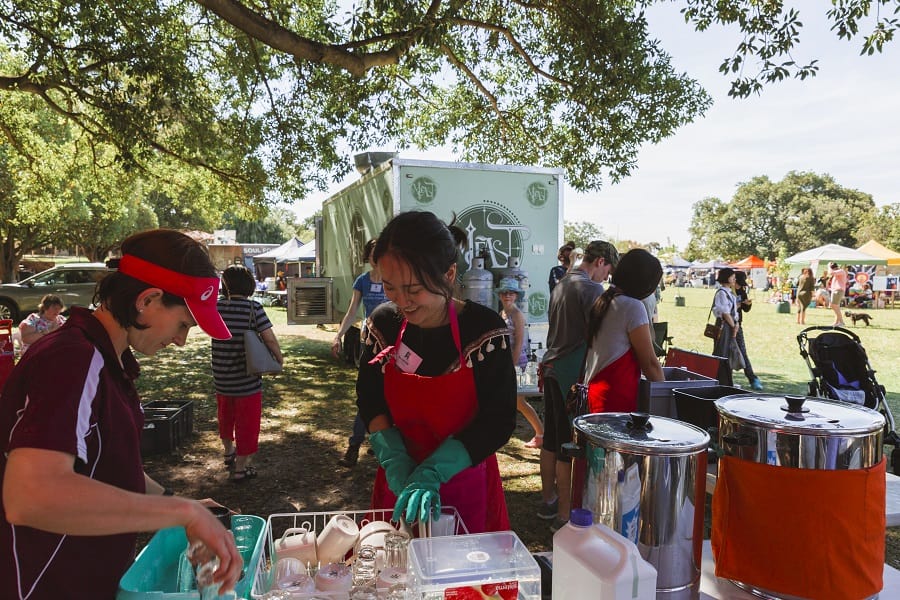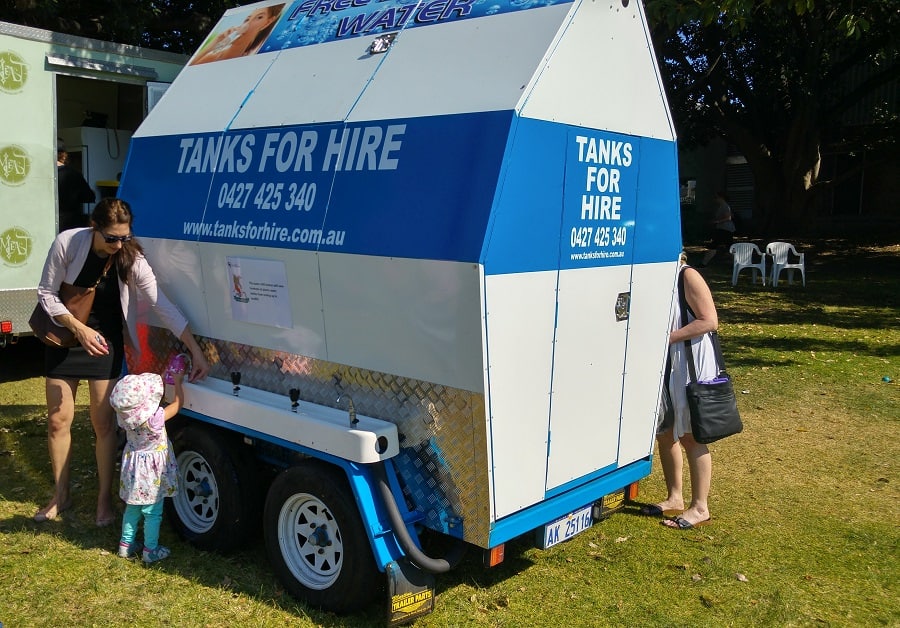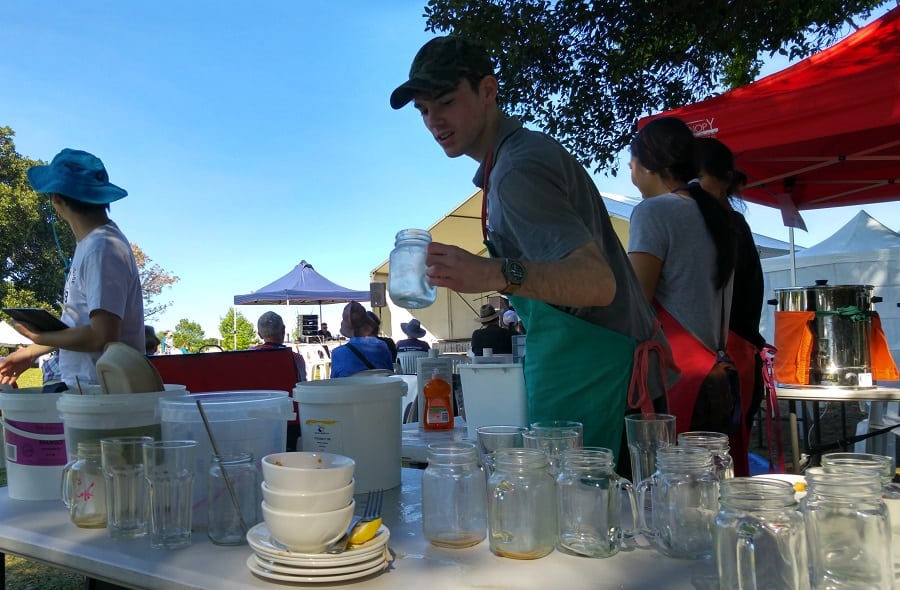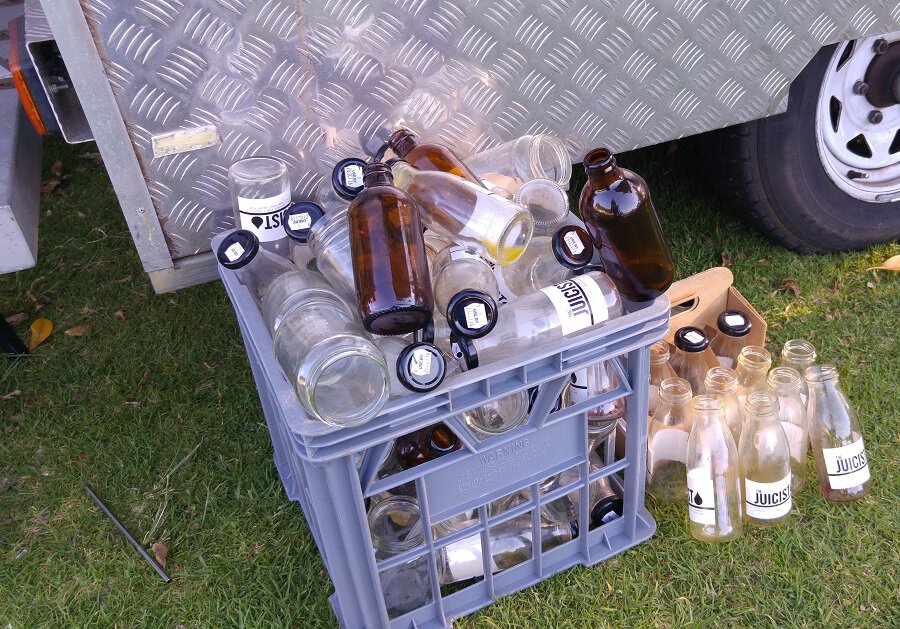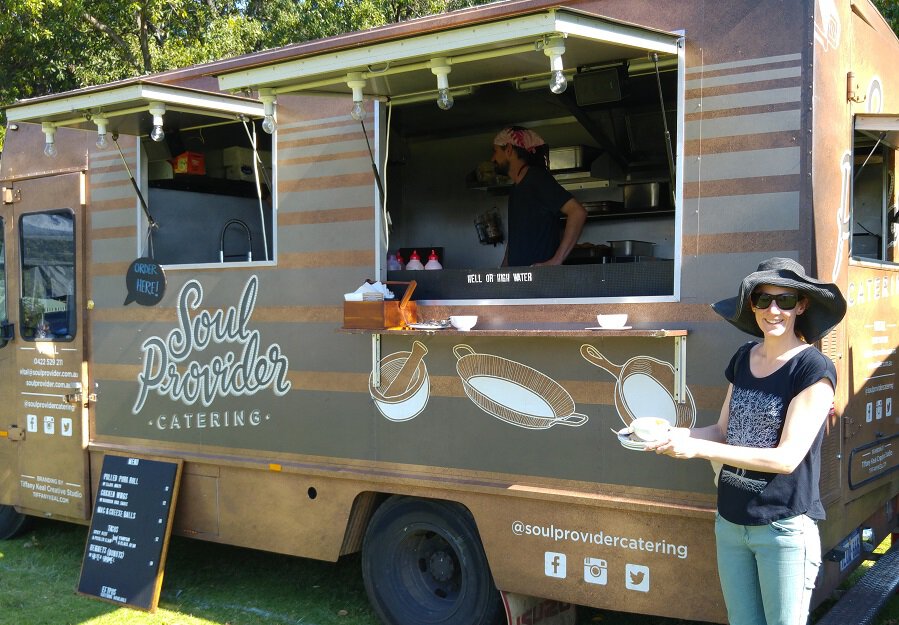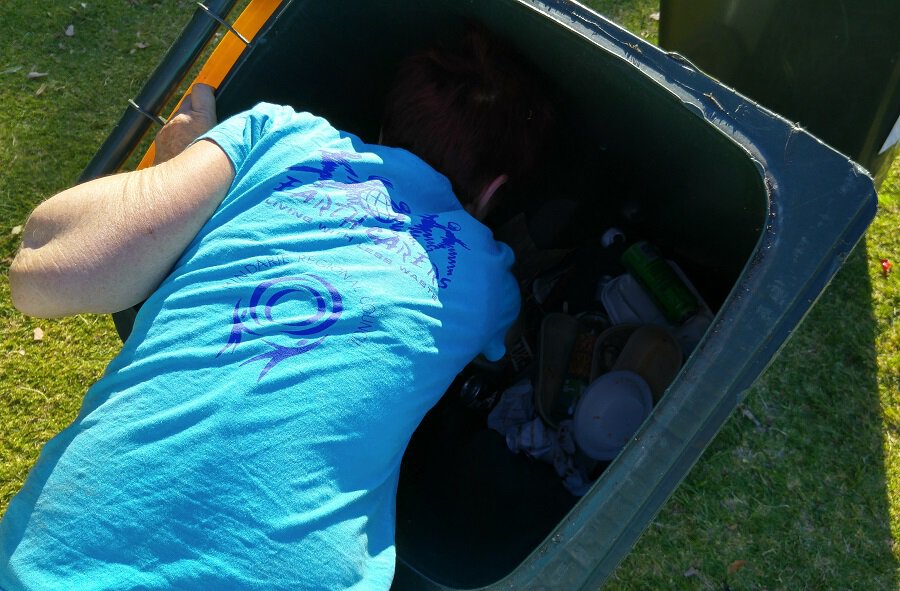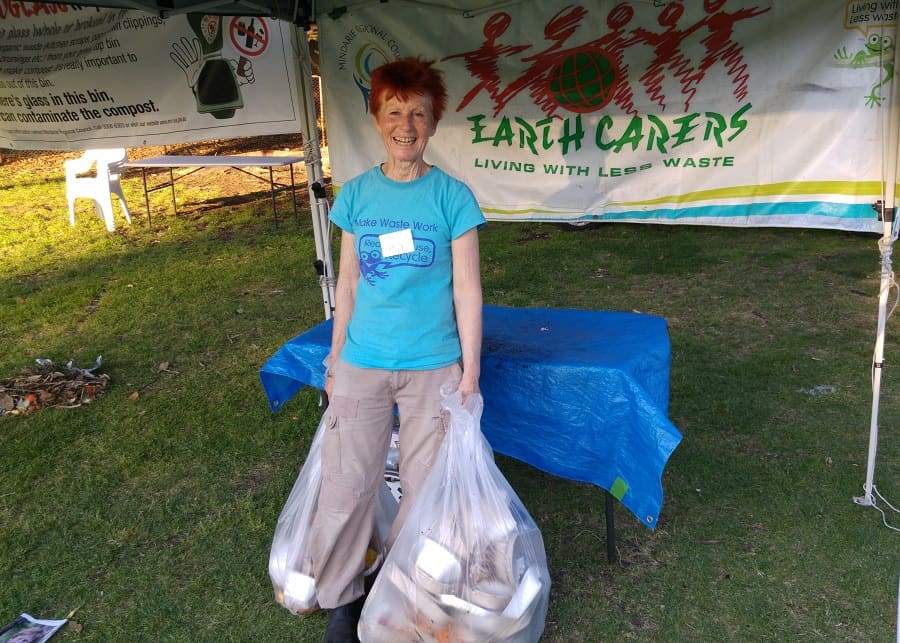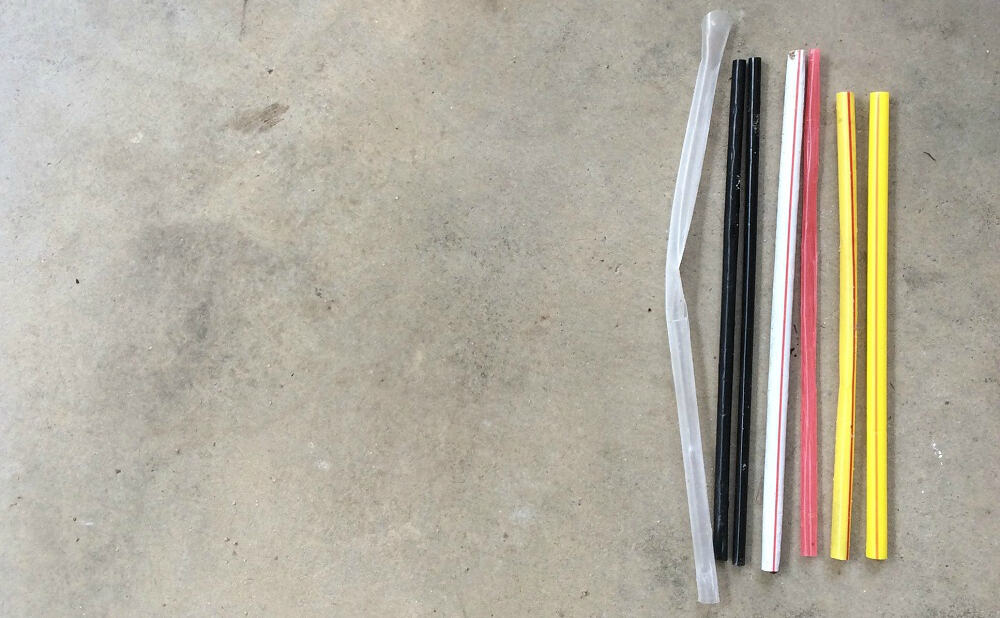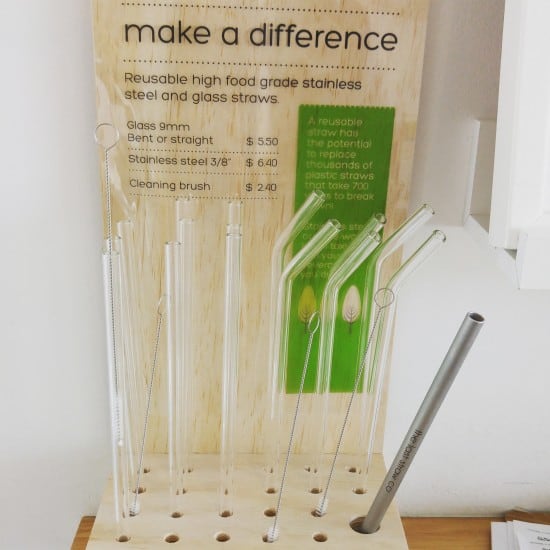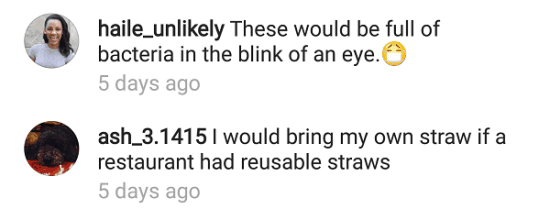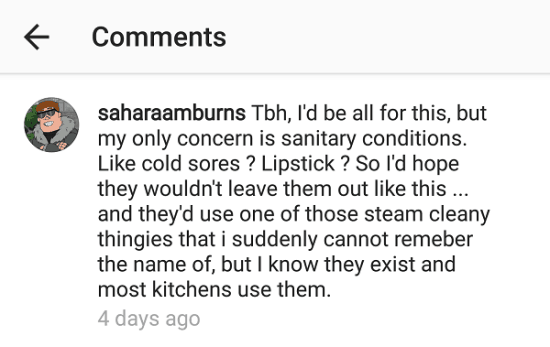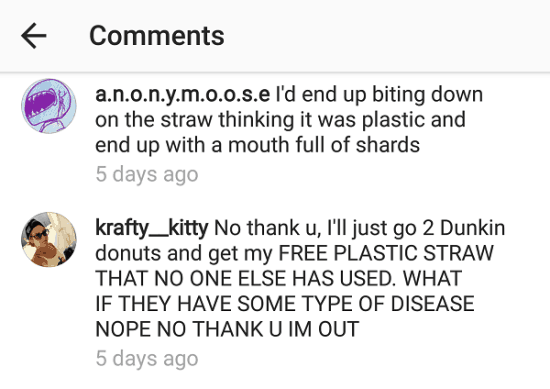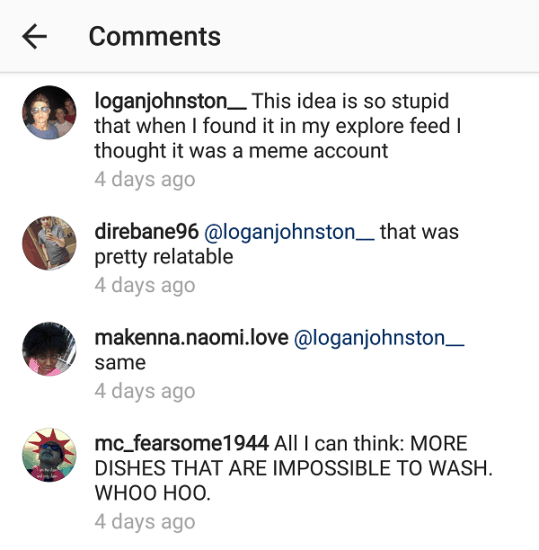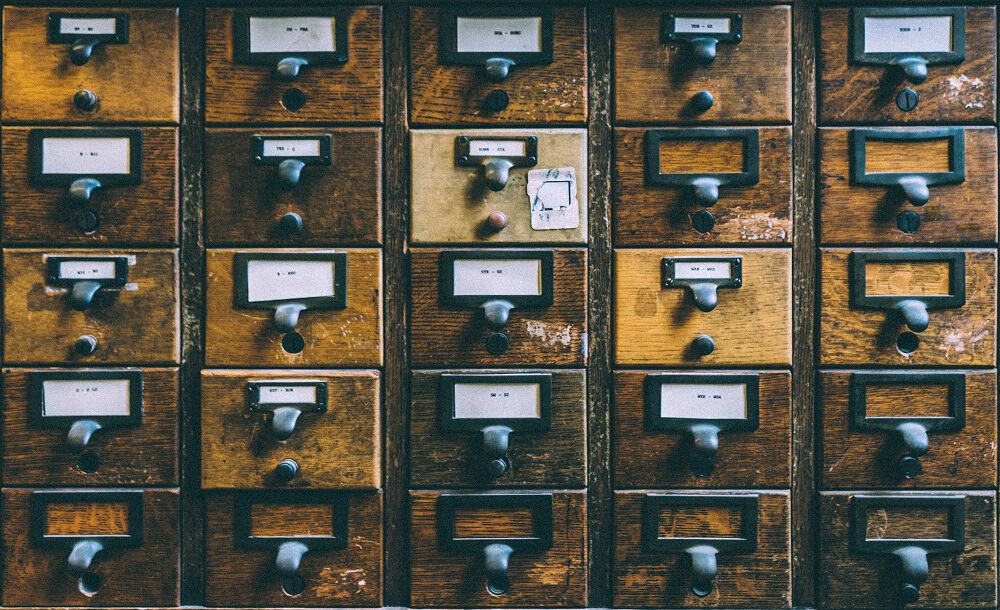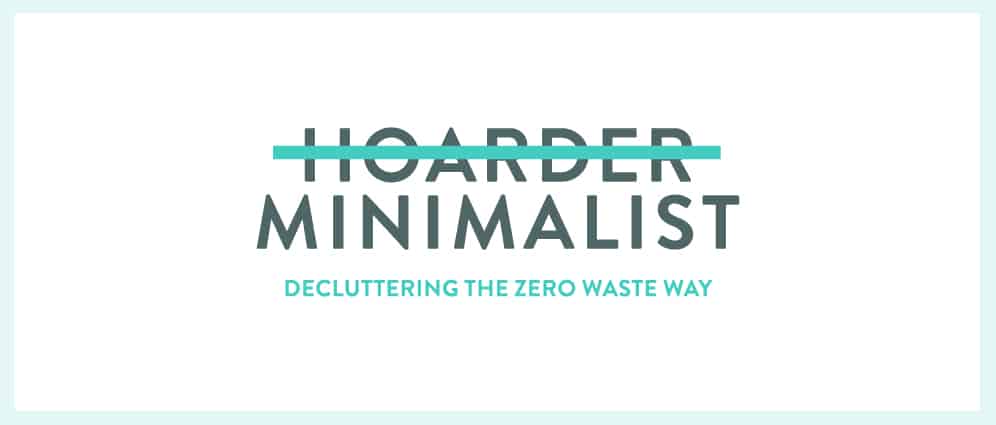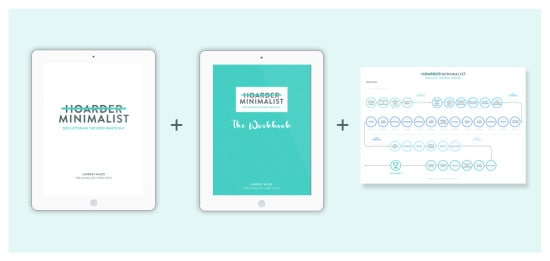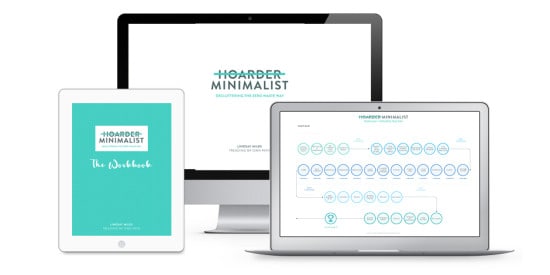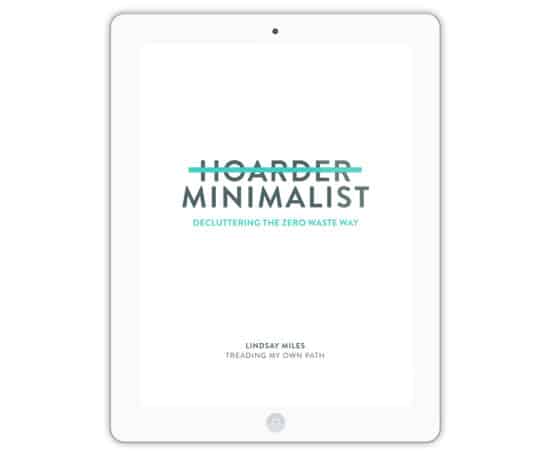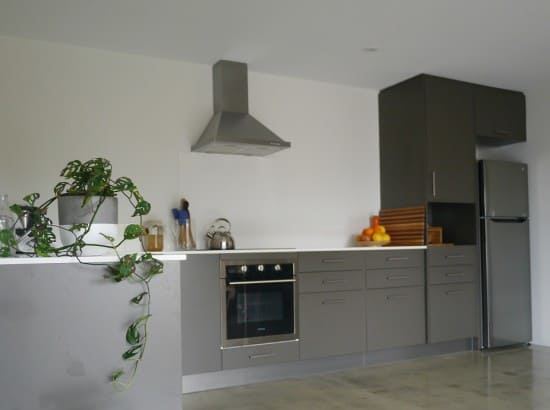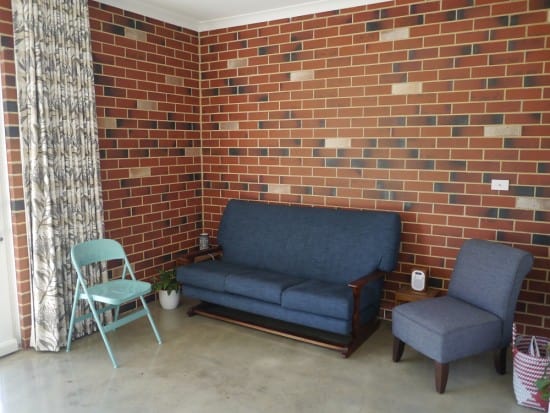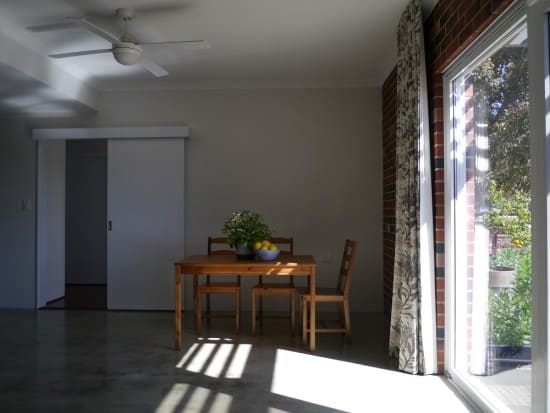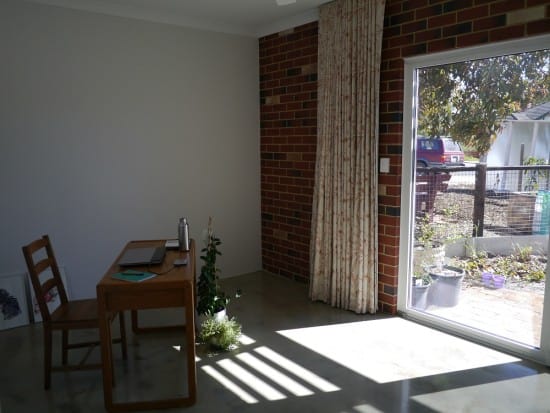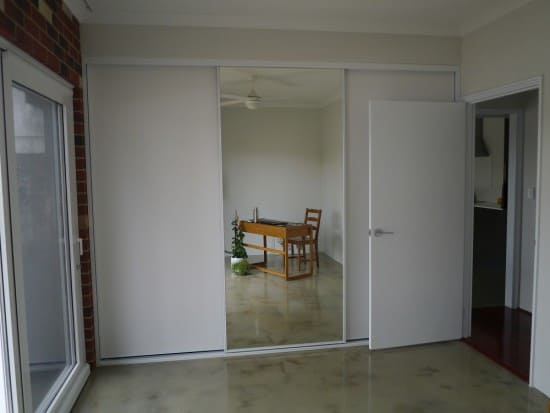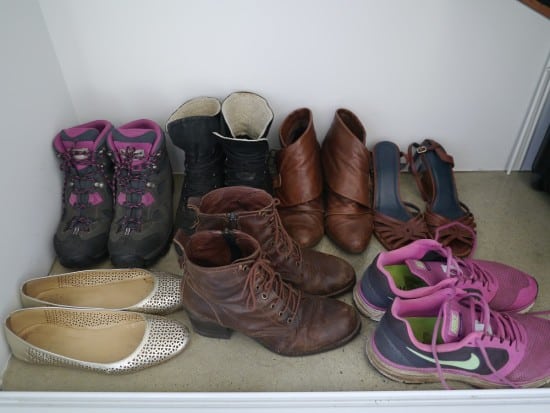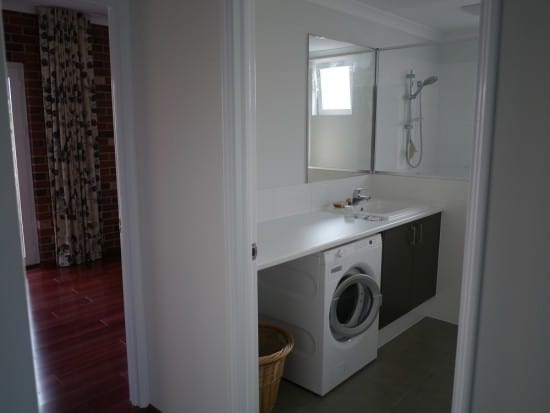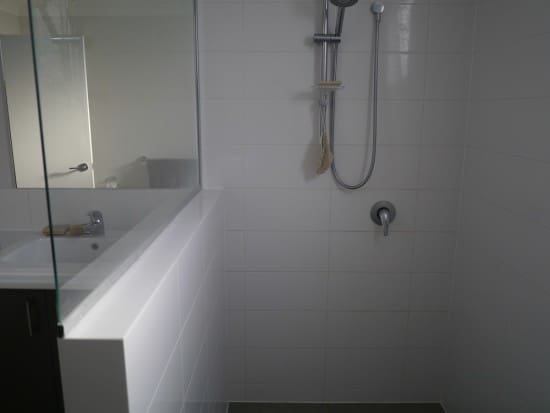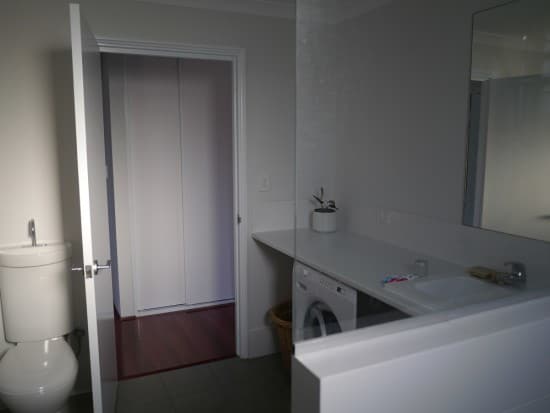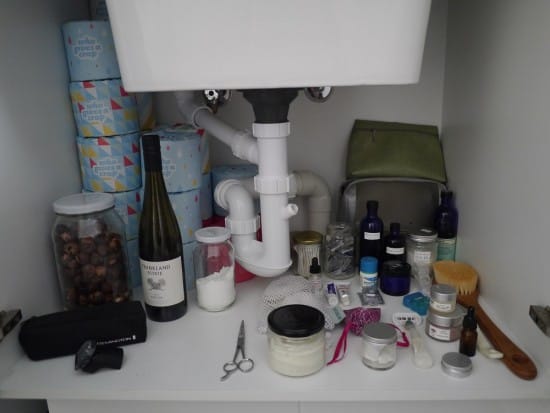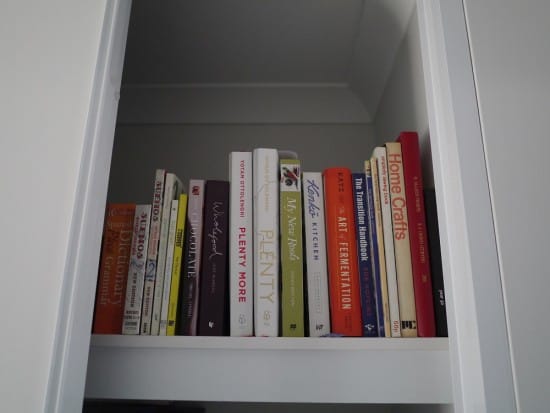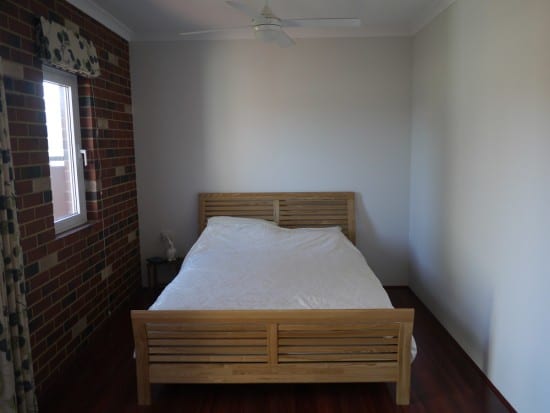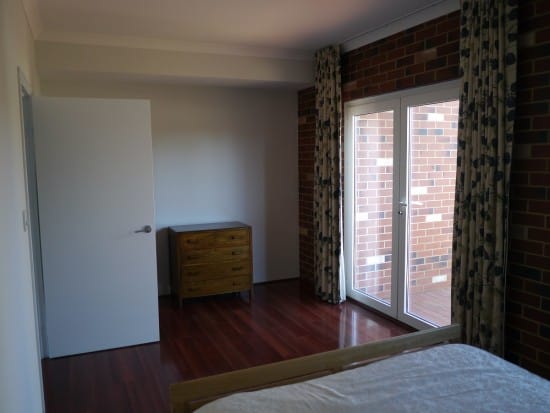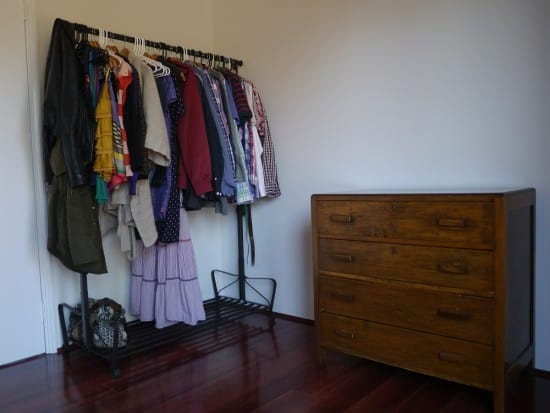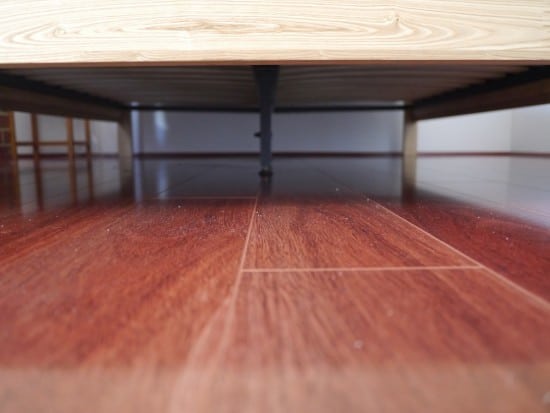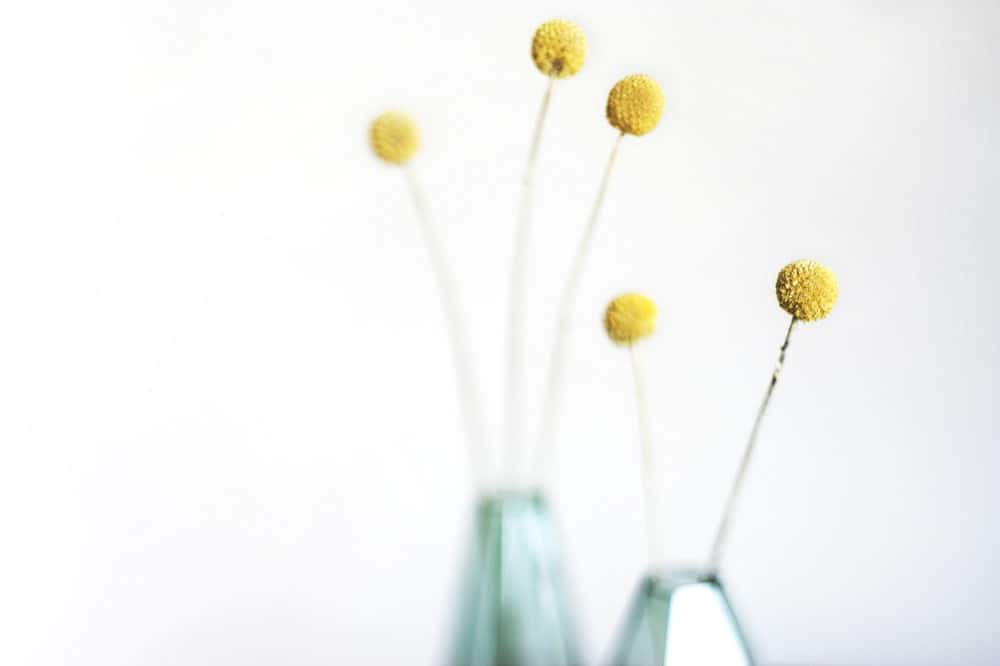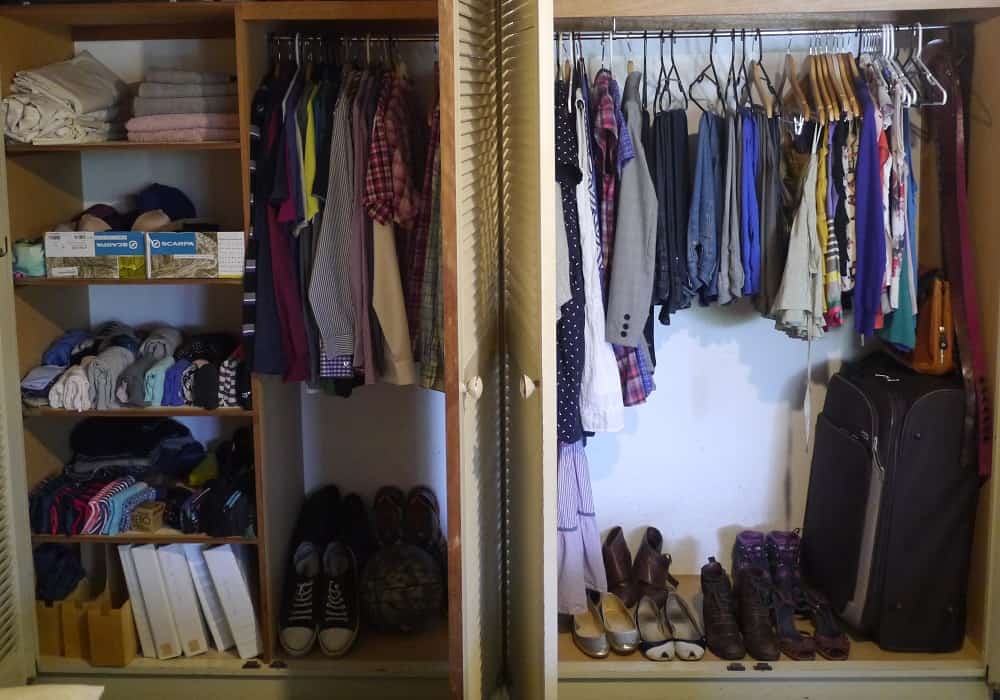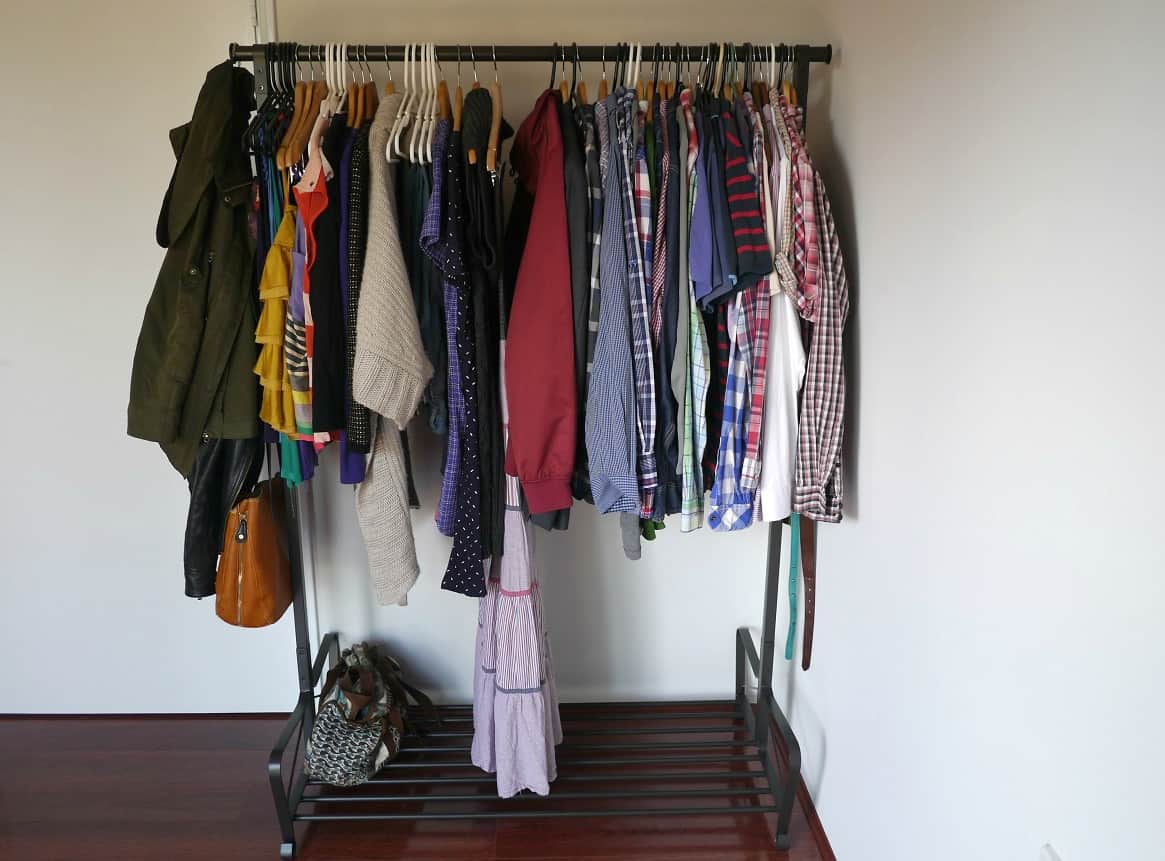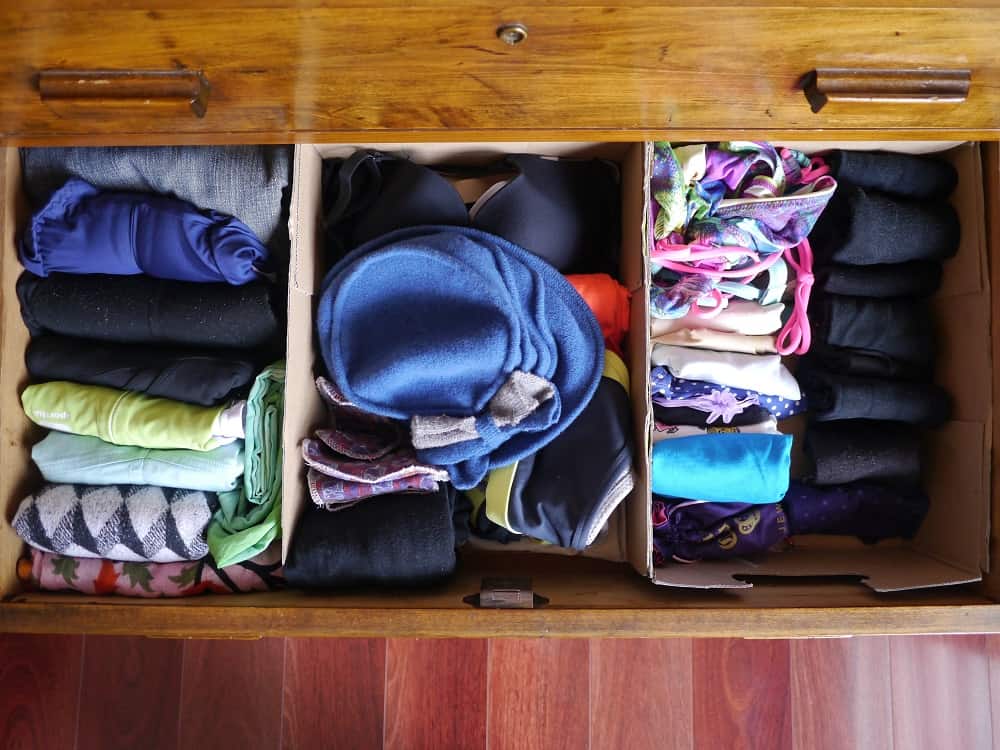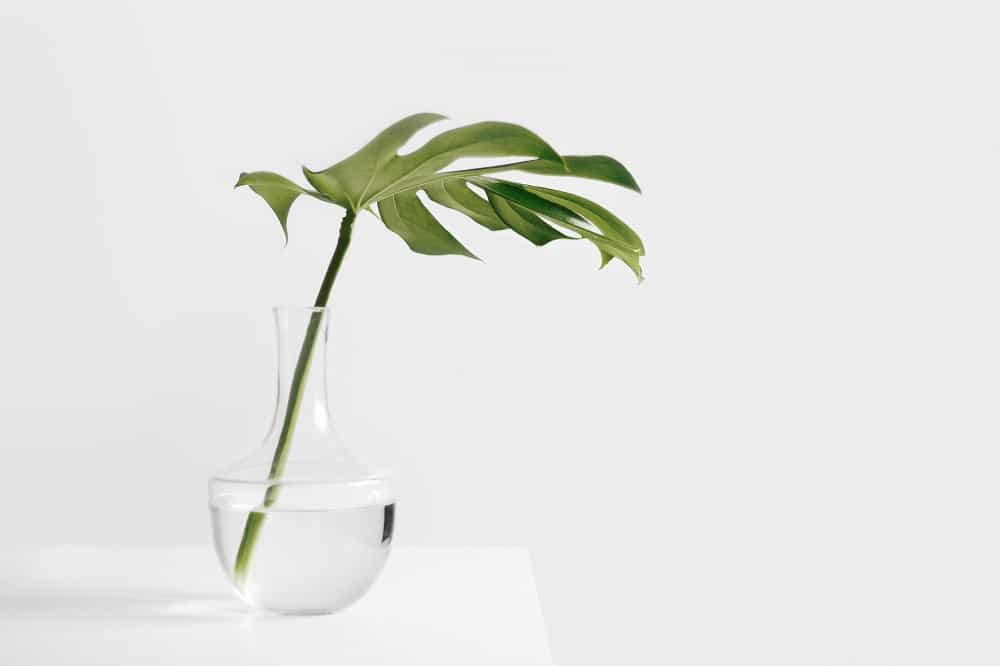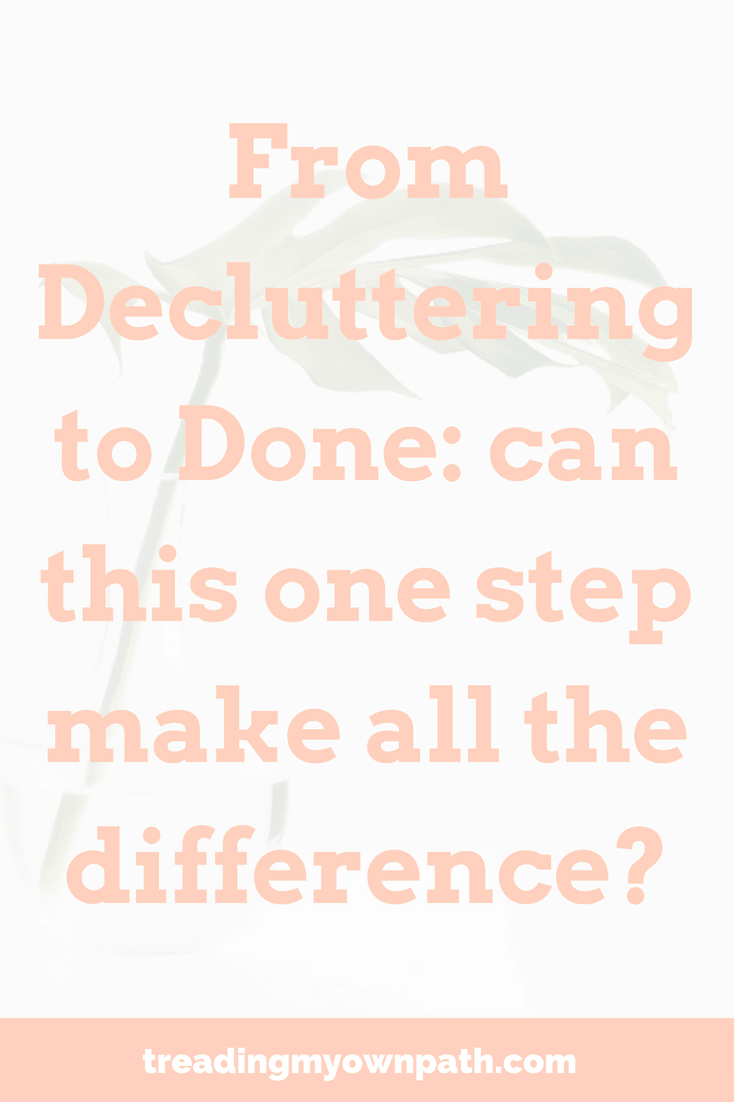3 Zero Waste Recipes: DIY Cashew Milk, Homemade Almond Milk + Almond Pulp Brownies
Nut milk. The name sounds kind of ridiculous. But it looks like milk, has a similar shelf life, can be used in similar ways, and in many cases the nuts do actually have to be “milked”, so it’s easy to see why the name took hold!
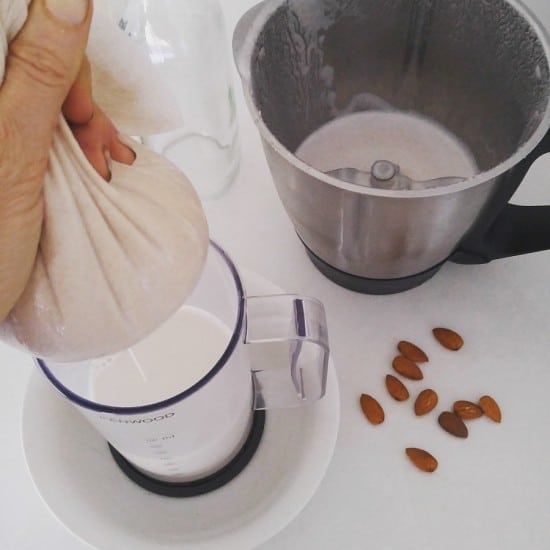
When I started out on my plastic-free journey, I bought cow’s milk that came in returnable glass bottles. But it wasn’t stocked in many places, so finding it was hard – and a bit of effort. Gathering those glass bottles together to return them meant a heap of clutter and a journey across town with them all (there was no deposit return either, only goodwill). Plus what to do with all those lids?!
I began making nut milk alongside dairy milk, because it was a lot easier to find nuts in bulk, and they have a long shelf life (they will last for months in a jar in the pantry, or even better, the freezer). I found nut milk worked just as well in baking, in porridge and in coffee, and I began to use it more and more.
Eventually I thought more about the impact of the dairy industry on the planet. Cows need a lot of water and land to produce milk, they produce huge amounts of methane, cause soil erosion, and the product has to be transported fresh, meaning a higher carbon footprint. Nuts use less water, the trees are beneficial for the environment, and the products have a long shelf life.
Nut milk seemed like the greener option. I decided to stop buying dairy milk altogether (my husband stopped too, but later).
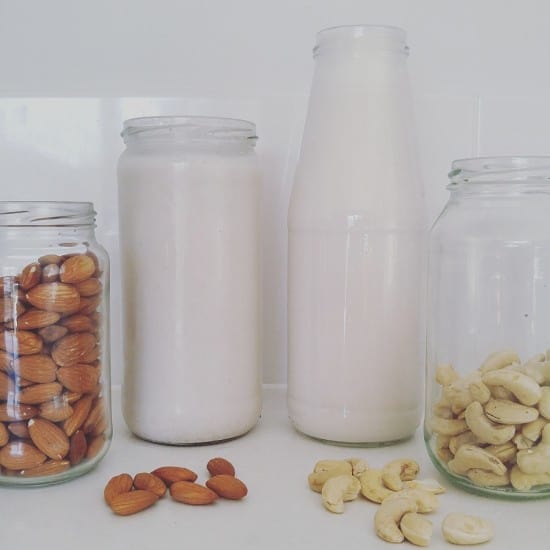
But of course, I don’t buy nut milk. Some commercial brands of nut milk are little more than bottled water! Alpro’s nut milk contains only 2% almonds, and the second biggest ingredient is sugar. Unnecessary packaging aside, shipping all that water across the globe seems like such a waste when we can ship dry nuts (or even better, use local ones) and make our own.
And I have to tell you, making your own is super easy. It requires no specialised equipment, and takes very little time. You’ll need a blender, but it doesn’t have to be a fancy one.

How To Make Cashew Milk
Cashew milk is my go-to milk because it’s the easiest. Cashews are already quite soft, so they do not need to be soaked for a long time. They also contain very little fibre, so there is no need to strain.
To make:
Soak 1 cup of raw cashews in water for a few hours or overnight. Rinse, and blend with 4 cups water. Done.
I tend to blend my cashews with 1 cup of water at a time, for 30 seconds, before adding the next cup of water. I find that there are less (no) lumps in it this way.
Makes 1.2 litres. Lasts 7 – 10 days in the fridge. It may get thicker over time, in which case add a little more water to it.
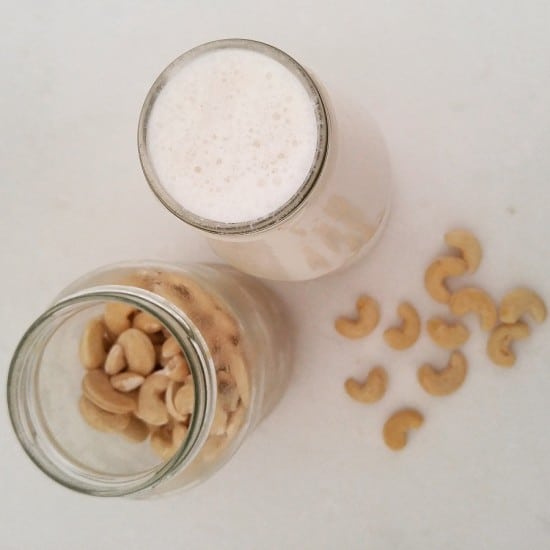
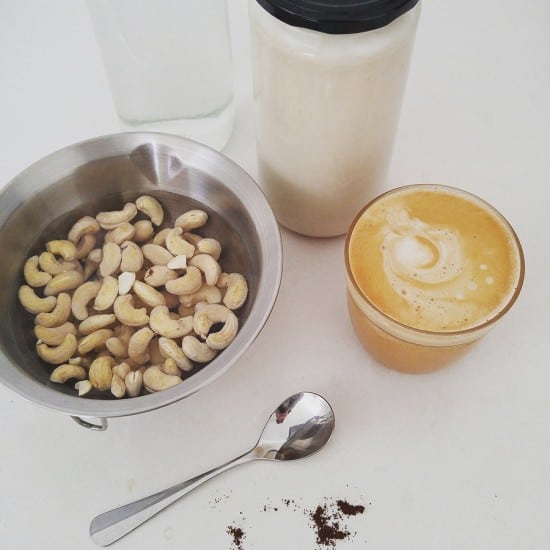
Cashew milk works absolutely amazingly in coffee, too :)
How to Make Almond Milk
Almond milk is the most common nut milk, but it isn’t the easiest or quickest to make. That doesn’t mean it’s hard, mind! It just needs soaking a little longer, and also straining.
To make:
Soak 1 cup of raw almonds in water for at least 12 hours, and even 24 hours (change the water every 8 hours or so). Rinse, and blend with 4 cups of water.Now you need to strain.
I strain my almond milk using cheesecloth as it has a fine weave and is 100% cotton. Spread the cheesecloth over a bowl or jug, pour the milk over and allow the almond milk to drip through. Squeeze to get any remaining drops out.
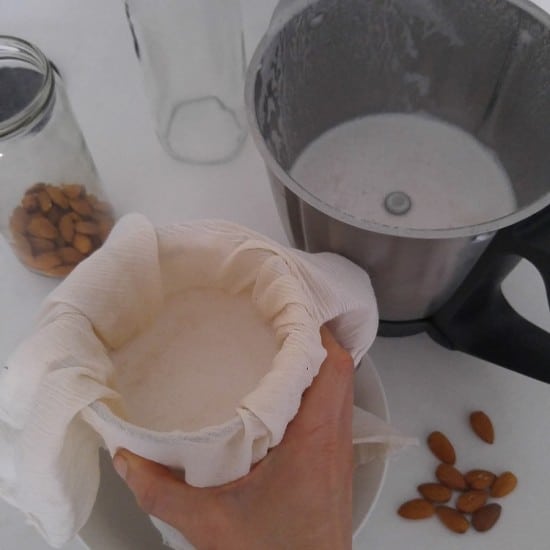

I bought my cheesecloth off the roll at a fabric store – it is very inexpensive. (Cheesecloth is not the same thing as muslin. Muslin has a much looser weave and the fibre all gets stuck!)
Alternatively, you could use a clean tea towel or old pair of tights, or even a fine mesh sieve. Before I had the cheesecloth, I used one of my mesh produce bags. There is absolutely no need to buy an expensive plastic nut milk bag!
Makes about 800ml, and leaves a cup of almond pulp. Don’t throw the almond pulp away! It will last in the fridge for a week, or freeze it. And then make chocolate brownies : ) (Recipe below).
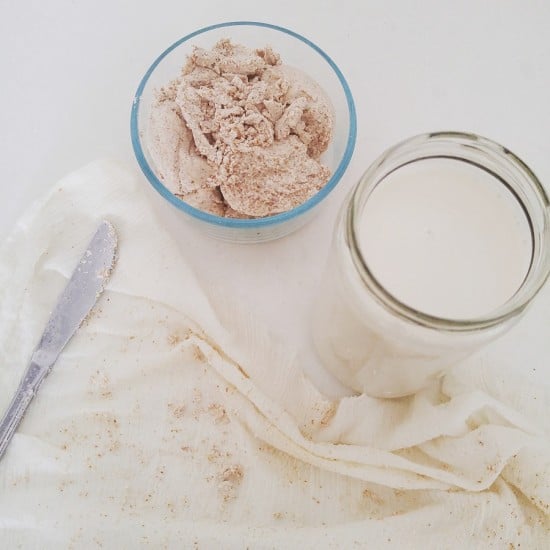
Fresh almond pulp (almond milk on the right). I use cheesecloth the strain, and scrape the excess pulp off with a knife.
How to Make Other Nut Milks
Other nut milks can be made in the same way, and most will require some kind of straining, although they won’t produce as much pulp as almond milk does. I’ve made macadamia milk (no need to strain), brazil nut milk and walnut milk.
Cheaper Nut Milk Alternatives
Nuts can be expensive. Increasing the ratio of nuts to water will make a more cost-effective milk, but will also dilute the milk. I tend to use the ratio 1:4 nuts:water but this could be increased to 1:5 or 1:6.
As well as nuts, you can also make plant-based milk with seeds, oats and peanuts (which are techincally a legume, not a nut).
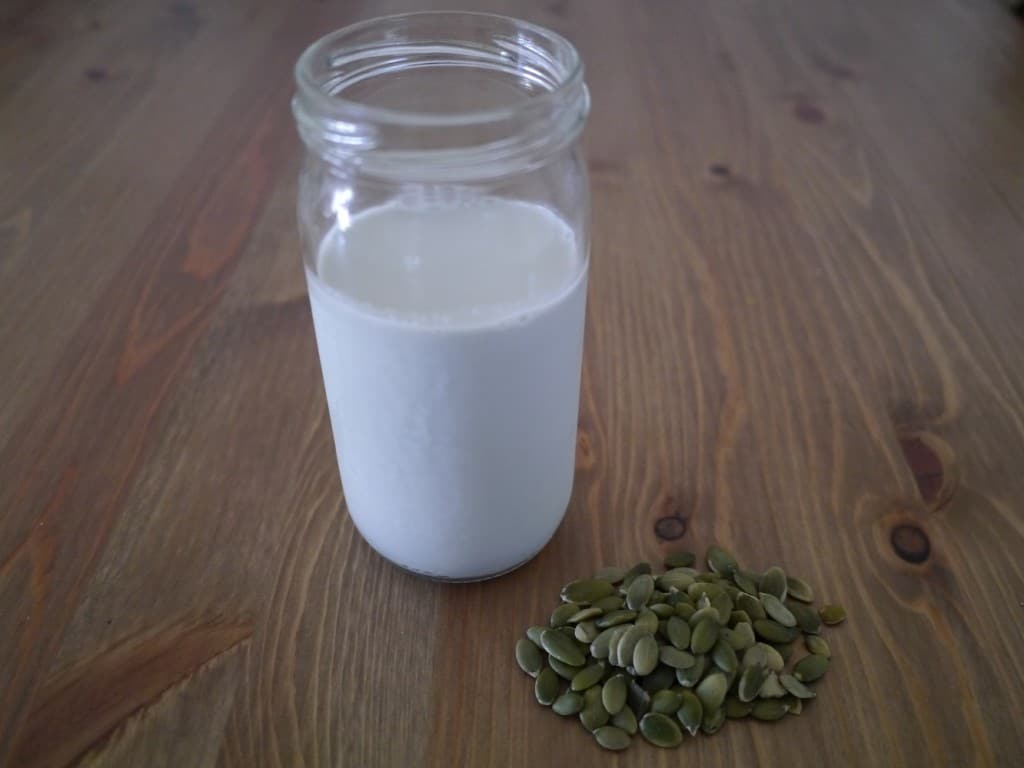
Homemade pumpkin seed milk :)
These work out much cheaper than nut milks. I’ve tried making sesame seed milk (not recommended – it has a very strong flavour!), pumpkin seed milk (which is absolutely delicious) and sunflower seed milk. Flaxseed milk is also popular, although I’ve never tried this.
As above, the principle is the same. Soak, then blend 1 cup seeds with 4 cups water, and strain.
Now, let’s talk about what to do with the leftover pulp.
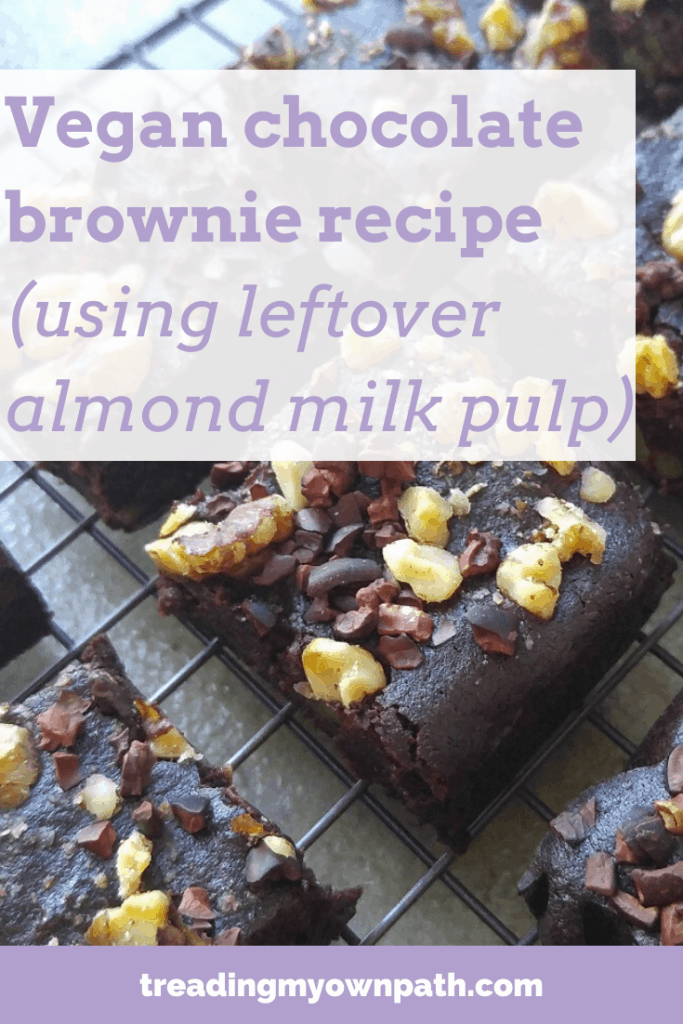
What to Do with the Leftover Pulp: Make Almond Pulp Brownies
This recipe has become my go-to almond pulp recipe. I’ve made savoury crackers, and macaroons too, but nothing beats chocolate-y goodness, so I always come back to this one.
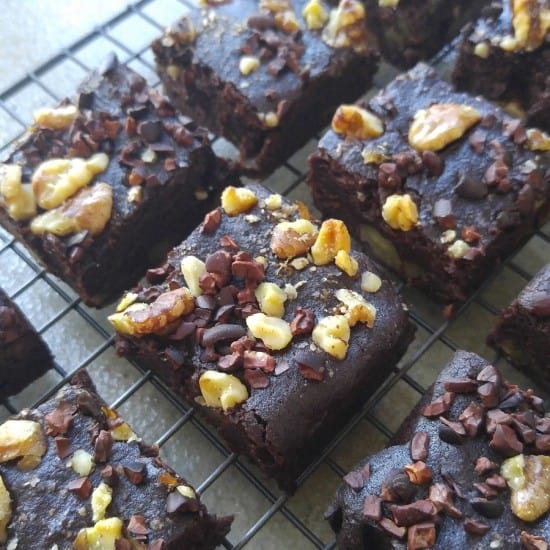
Ingredients:
180g sugar (I use rapadura sugar)
1 cup almond pulp, approx (the pulp left over from using 1 cup of almonds to make almond milk)
80g cocoa powder (I’ve used both cocoa powder and raw cacao for this – I prefer cocoa powder but it doesn’t really matter. You might want to add a little more sugar if using cacao, though)
1/2 cup (110g) coconut oil (I use deodorised as I find the coconut oil flavour a little intense in desserts)
9 tbsp aquafaba (chickpea water – effectively a waste product being put to good use. Find out more here!)
1/2 cup (60g) spelt or other flour
1 tbsp vanilla essence
1/2 tsp salt
1 cup macadamias/walnuts/raspberries/chocolate chips/something else delicious
(or you could leave plain. But I consider all good brownies to need some kind of crunch)
Optional: a few tablespoons of cacao nibs and/or chopped nuts to top.
Method:
Line a square baking tin (if you use baking paper) and preheat the oven to 175°C.
Melt the coconut oil in a pan. Turn off the heat, add the almond pulp and stir to combine.
In a separate bowl, combine the sugar, cocoa powder and flour, and mix well. Add to the pan and stir in. It might seem really dry at first, but it will incorporate. Once combined, add the vanilla essence, salt and walnuts (or delicious thing of your choice).
In a tall cylinder, whisk the aquafaba to form stiff peaks. (This will take longer than you think.) I use a stick blender with a whisk attachment and it takes at least 5 minutes of constant whisking. Add the aquafaba to the brownie mixture in the pan, slowly folding to incorporate with as little stirring as possible.
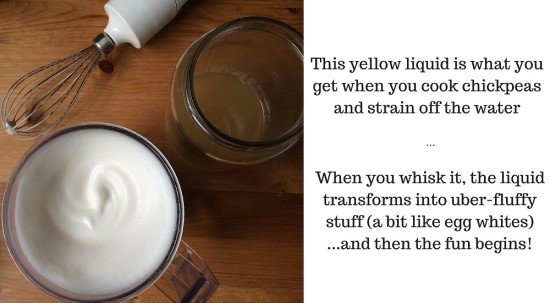
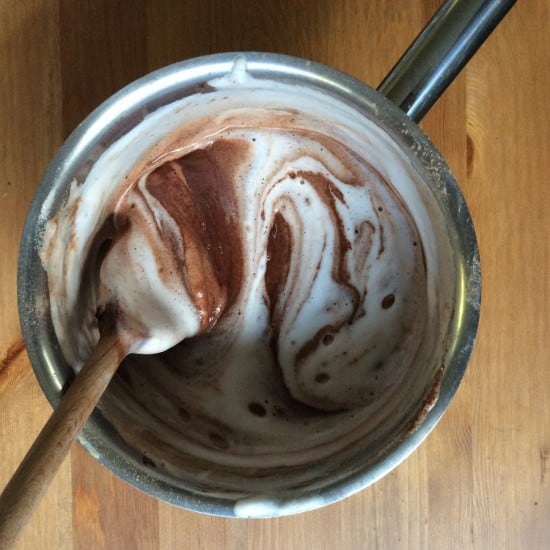
Once incorporated, pour into the baking tray. Sprinkle the toppings on (if using) and bake in the oven for 20 – 25 minutes until the top is dry.
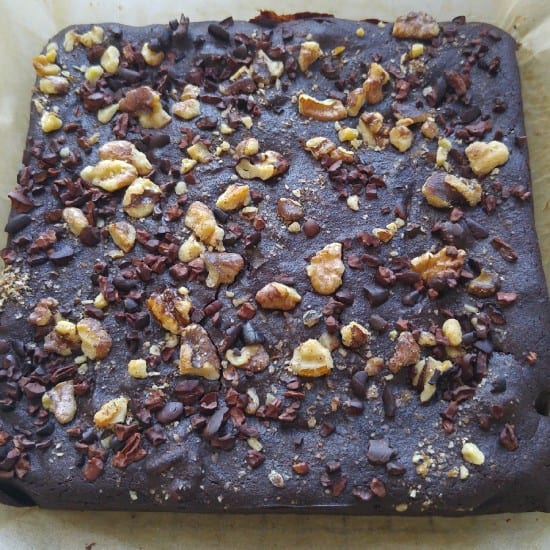

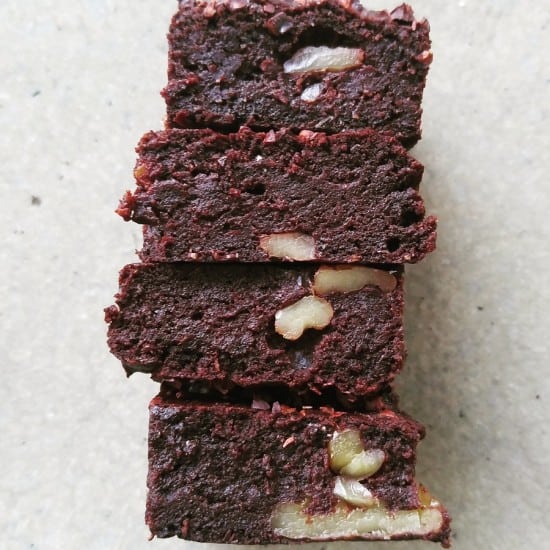
Best stored in the fridge if you don’t demolish the whole lot in one sitting.
Now I’d love to hear from you! Have you ever made nut milk (or seed, oat or rice milk)? Which is your favourite? Which is your least favourite? If you’ve never made it before, is there something putting you off? Do you have any other alternatives to suggest? What about aquafaba – have you ever experimented with that? Are you just a little bit tempted to make these chocolate brownies?! Anything else you’d like to add? Please tell me your thoughts and leave a comment below!





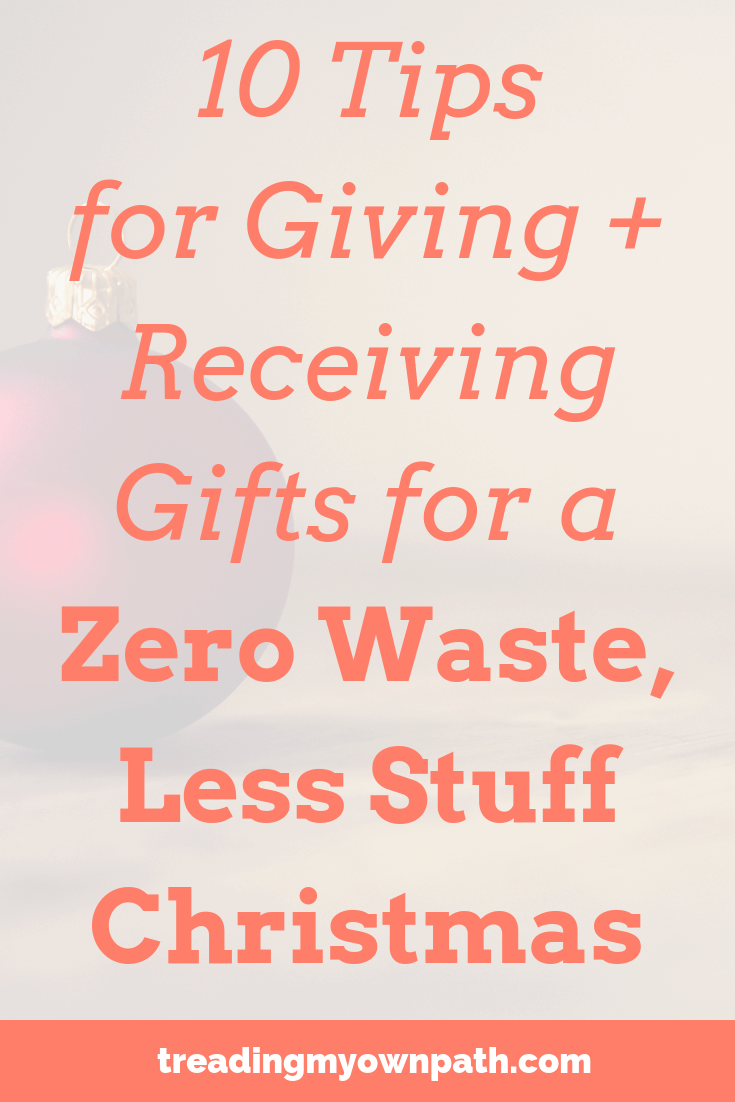
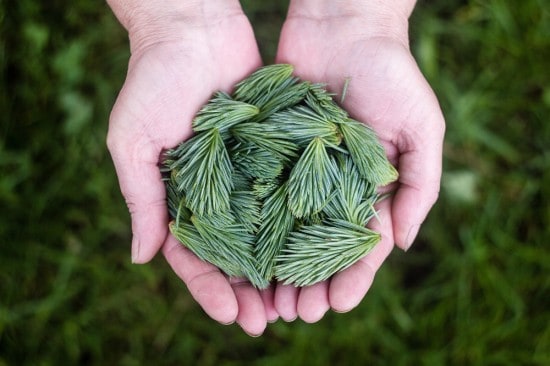
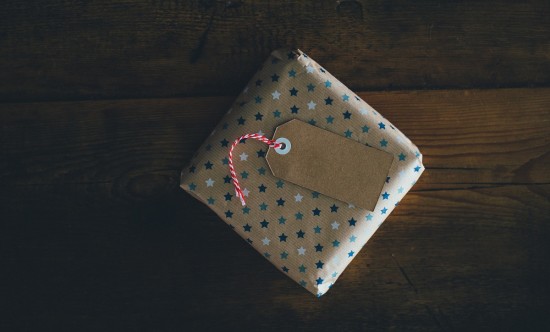

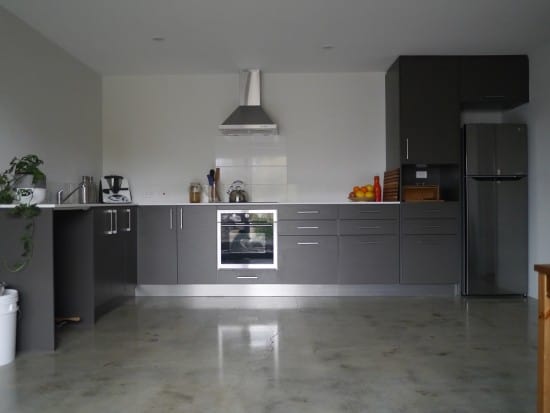
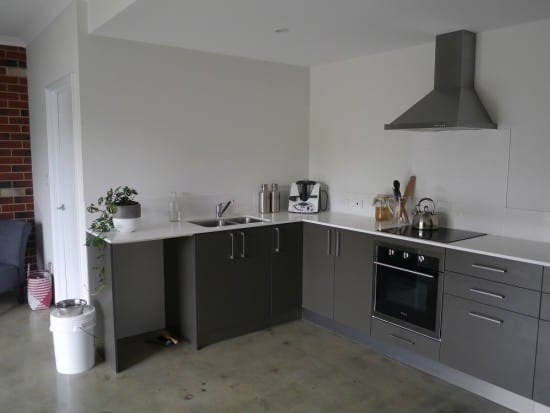
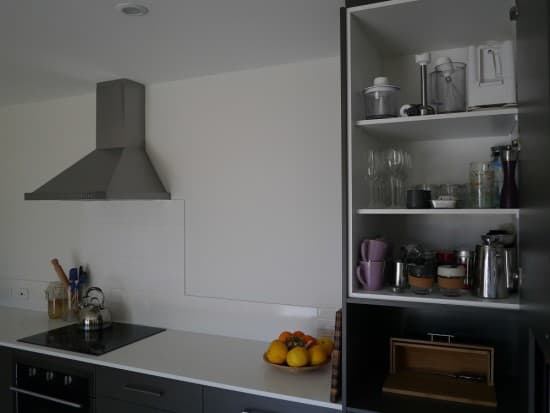
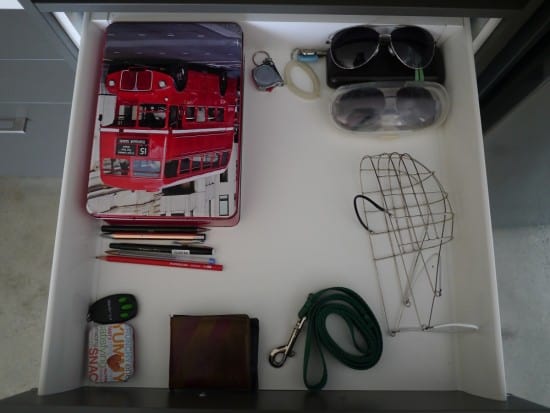 Drawer 1: I guess the top drawer in our kitchen would be classed as our junk drawer. We keep Hans’ (our adopted greyhound) lead and muzzle in here, sunglasses, garage clicker, pens and seeds. As we had so many drawers that weren’t that useful for much else it made sense to keep this stuff here.
Drawer 1: I guess the top drawer in our kitchen would be classed as our junk drawer. We keep Hans’ (our adopted greyhound) lead and muzzle in here, sunglasses, garage clicker, pens and seeds. As we had so many drawers that weren’t that useful for much else it made sense to keep this stuff here.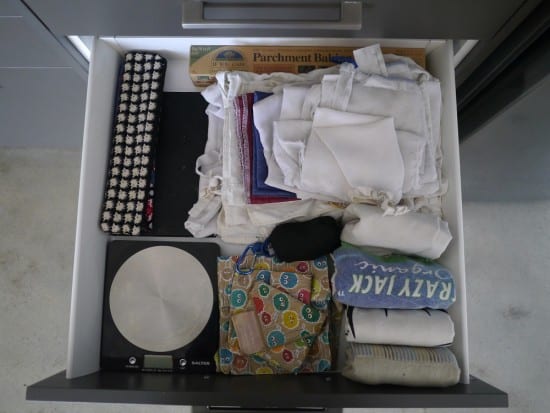
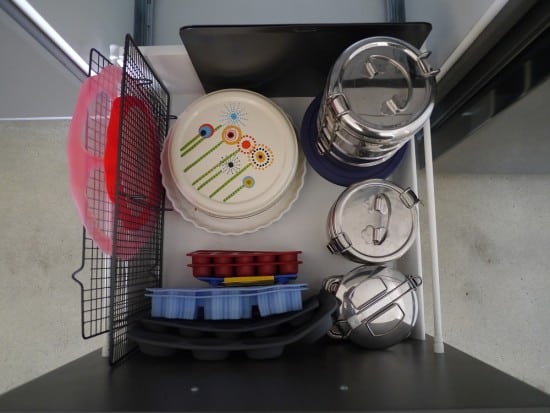
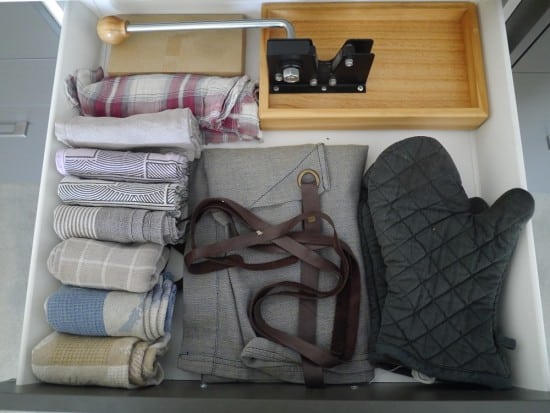
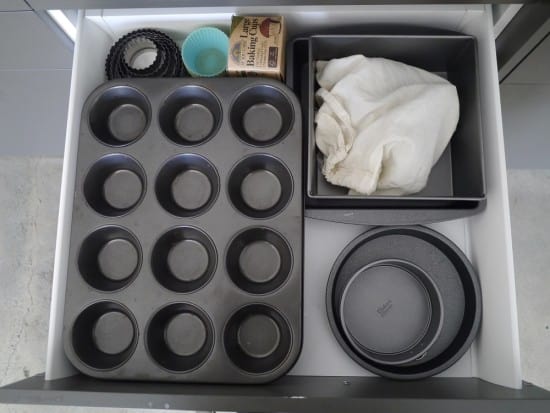
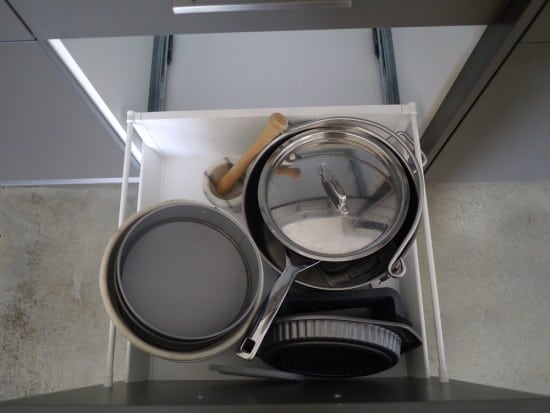
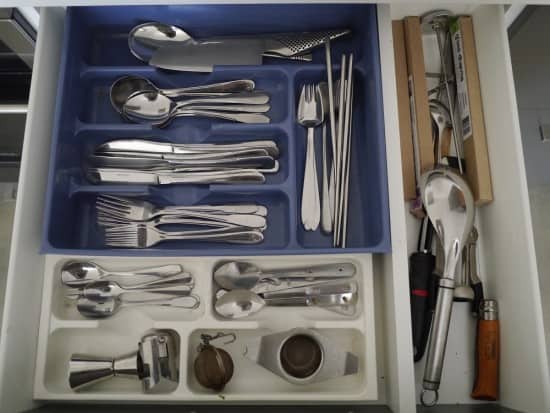 Drawer 7: Much as I hate plastic, I dislike a jumbled cutlery drawer more. And there seemed no point discarding what we already had to buy something new and plastic-free.
Drawer 7: Much as I hate plastic, I dislike a jumbled cutlery drawer more. And there seemed no point discarding what we already had to buy something new and plastic-free.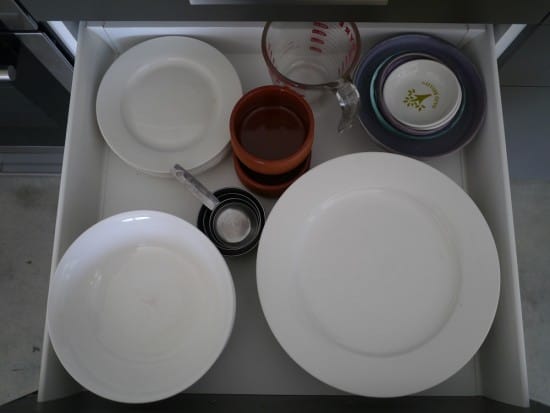 Drawer 8: our crockery. We have 6 dinner and side plates, and 5 bowls as one broke (which is fortunate as the drawers are too shallow to hold six bowls). There’s my set of measuring cups, a Pyrex measuring jug and assorted bowls and dishes that get used for various things. The two brown ones were the containers for some fancy dips purchased at the supermarket!
Drawer 8: our crockery. We have 6 dinner and side plates, and 5 bowls as one broke (which is fortunate as the drawers are too shallow to hold six bowls). There’s my set of measuring cups, a Pyrex measuring jug and assorted bowls and dishes that get used for various things. The two brown ones were the containers for some fancy dips purchased at the supermarket!